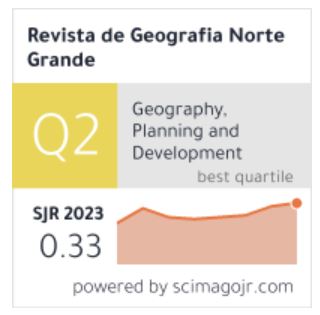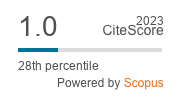Pleniglacial Desertization, Large-Animal Mass Extinction and Pleistocene-Holocene Boundary in South America
Palavras-chave:
Pleniglacial Desertization, extinction, Pleistocene-Holocene, South AmericaResumo
The drastic qualitative and quantitative impoverishment, represented by the extinction of the megafauna biomass constitutes one o{ the most notable events in the South American Quaternary. Extensive savanna and steppe biomes which today cover 2/3 of the continent are actually in terms of herbivorous megafauna biological deserts (e.g. Fuego- Patagonian, Pampas and Altiplano steppes, Llanos del Orinoco, Cerrados, Gran Chaco, Gran Sabana and Bogotá savannas as well as the Caatinga scrubs).
The supraregional scope of this phenomenon and its concurrence with geoscientific data lead for the first time to the hypothesis that it was caused by the radical increase of aridity during the Late Pleistocene (12,000-18,000 y.B.P.), especially in the tropics, and not by cultural reasons which had only a very limited impacto In {act, an area with about 11.5 x 106 km2 suffered long interannual droughts during this period being an unsurmontable hysiological barrier for the large mammals. A first extinction waveaffected particularlythe tropicaland subtropicalecosystems of the Atlantic side (regions of the Orinoco, NE of Brazil and the Pampasia of Argentine and Uruguay) between 12,000-18,000 y. B.P. A retarded wave badly affected all the Andean and peri-Andean ecosystems between 10,000-9,000 y.B.P. (regions of the Gran Chaco, western Fuego-Patagonia, Altiplano of Bolivia and the present Atacama Desert). This delay or did ferential extinction on the South American scale must be associated with the glaciation that affected the Andean Cordillera until the close of the Wisconsin.
To the total surface of arid land that included at least the implantation of four continental deserts along the whole tropical and subtropical zone, we must add the marginal deserts of the emerged marine platforms, as well as a discontinous belt of desert-islands for the megafauna impossed by glaciers and mountains (ea. 1.2 x 106 km2). In this way, and as indicated by the zoo-and geodata compiled in the last ten years, the transition Pleistocene-Holocene was brutal. In fact, post-glacial fossiliferous beds (less than or equivalent to 10,000 y.B.P.) lack the characteristical giant forms of the last glacial). Mastodons, megatheres, toxodons, palaeolamas, glyptodons, bears, etc. are totally absent. Independent of their biochron, ancestry or geographic origin, only the smaller species survived, leading at the beginning of the Holocene to a ciear inversion of the founal character, -that is the placement of a dominant megafauna by a microand mesofauna. With few exception (Camelidae, Cervidae) the whole megafauna became extinct from the Straight of Magellan up to the Lesser Antilles. This supports the fact that the present zoogeographical arrangement of South America constitutes a modern evento Finally it cannot be disregarded that a similar aridity during the Late Pleistocene was responsible for the large-animal extinctions in other southern continents, such as Australia and Africa.
Downloads
Referências
DAMUTH, J. & FAIRBRIDGE, R. 1970: Equatorial Atlantic deep-sea arkosic sands and Ice-Age aridity in Tropical South America. Geol. SocoAmer. Bull. 81: 189-206.
KLAMMER, G. 1982: Die Paleowüste des Pantana! von Mato Grosso und die plaistozane Klimageschichte der brasilianischen Randtropen. Z. Geomorph. 26 (4): 393-416.
HUECK, K. & SEIBERT, P. 1972: Vegetationskarte von Südamerika (1:8.000.000), 71 pp. Edited by H. Walter, Gustav Fischer Verlag, Stuttgart.
KOLLA, V., BISCAVE, P. & HANDLEY, A. 1979: Distribution of Quartz in Late Quaternary Atlantic sediments in relation to Climate. Quat. Res. 11(2): 261-277.
OCHSENlUS, C. 1983: Reste ausgestorbener Siiugetiere aus dem Bolivianischen Hochgebirge. Bremen Abhandlungen 12: 433-434.
OCHSENlUS, C. 1971: Un reconocimiento del Cuaternario en el Nordeste del Brasil, 22 p., Inst. Geogr. Univ. de Sao Paulo (Inedited).
OCHSENlUS, C. 1972: Contribución a la Ecologíay Paleoecología de la Puna de Atacama. 74 pp., 5 figs.+20 plates. Departamento de Geografía, Univ. de Chile.
-----1974: Relaciones Paleobiogeográficas y Paleoecológicas entre los Ambientes Lénticos de la Puna de Atacama y Altiplano Boliviano, Trópico de Capricornio. Bol. Prehist. Chile 7/8 (6/7): 99-138, Univ. de Chile.
------1976: The Lacustrine Environments of the Atacama and Sahara Deserts during the Late Pleistocene: Ecological and Climatic Importance. I Intern. Congr. of adf. Neogene Stratigraphy. COS.IUGS:169-171,Tokyo.
----- 1977: Pleistocene Regional Paleoecology Studies in the Atacama Desert. Abstr. X Inter. Congr. Intern. Uníon Quat. Res., INQUA, Univ. Birmingham.
------ 1977: El Pleistoceno en el Desierto de Atacama, Trópico de Capricornio. 557 pp., 90 figs. + 2 maps. (Doctoral Thesis), Univ. Sao Paulo.
------ 1978: The Neotropical Biogeography of Owen's Macrauchenia Genus and the relative effect of the Amazon Biota as ecologicbarrier during the Upper Quaternary. Abstr. 5th Bienn. Meeting Amer. Quat.
Assoc., AMQUA: 245-249, Univ. of Alberta.
-- -- -- 1979a: Late Pleistocene Faunas from the Corian Region of Venezuela, Northernmost South America. In: Quaternary Ecology in the Peri-Caribbean Arid Belt, Northernmost South America. Edited by C. Ochsenius, pp. 45-87, South American Quat. Doc. Programo
------ 1979b: Ancient Beaches and Biogeographic Landbridges resulting from Pleistocene Neotectonism and Glacioeustatism. In: Quaternary Ecology in the Peri- aribbean Arid Belt, Northernmost South America Edit by C. Ochsenius, pp. 94- 107. South American Quaternary Documentation Programo
------ 1979c: Dry Climates in Northern South America during the Last Glacial Periodo In: Quaternary Ecology in the Peri-Caribbean Arid Belt, Northernmost South America. Edited by C. Ochsenius, pp. 23-44. South American Quaternary Documentation Programo
OCHSENIUS,C. & GRUHN, R. 1979: Taima-Taima. A Late Pleistocene Paleo-IndianKill-Sitein Northern South America. 137 pp. South American Quaternary Documentation Programo
OCHSENIUS, C. 1981: Atacama: The Hologenesis of the Pacific Coastal Desert in the Context ofthe Tropical South America Quaternary. In: The Geological Story of the World's desert Edited by T.L. Smiley. Striae 17: 112-131, Univ. of Upsala.
------ 1981: Biogeographie und Okologie der Land megafauna Südamerikas und ihre korrelativen Landschaften im Jung-Quartar. Mit einer Diskussion über die Ariditiit als Extinktionsursache. 387 pp., 33 maps, 33 tables. Habil.-Schr. Philosophische Fakultat, Universitat des Saarlandes, Saarbrücken.
---- 1983: Aridity and Biogeography in Northernmost South America during the Late Pleistocene (Peri-Caribbean Arid Belt, 620-740W). Zb!. Ceo!. Palaont. Teil l, H. 3/4:264-278, Stuttgart.
----- 1984: Über die palaoklimatologie der intravulkanischen Korridore Ekuadors wiihrend der letzten Eiszeit. I. Die Cangahua-Formation als Indikator physischer Ariditiit (lnedited). South American Quaternary Documentation Programo.
PRICE, L.; ALMEIDA-CAMPOS, D. & BOURET, D. 1977: Localidades Fossiliferas das Folhas 5B18 lavarí e SC18 Contamana. Levantamento Rec. Nat. 13: 54-69, DNPM, Rio de Janeiro.
SAXON, E. 1976: La Prehistoria de Fuego-Patagonia: Colonización de un hábitat terminal. Ann. Inst. Patagonia 7: 63-73, Punta Arenas.
SARNTHEIN, M. & DIESTER-HAAS, L. 1977: Eoliansands turbidites. lourn. Sedimentary Petrology 47: 868-890. Acknowledgement: The author thank Miss Erika Veit, Dipl.-Ubersetzer, Corthe English translation.







